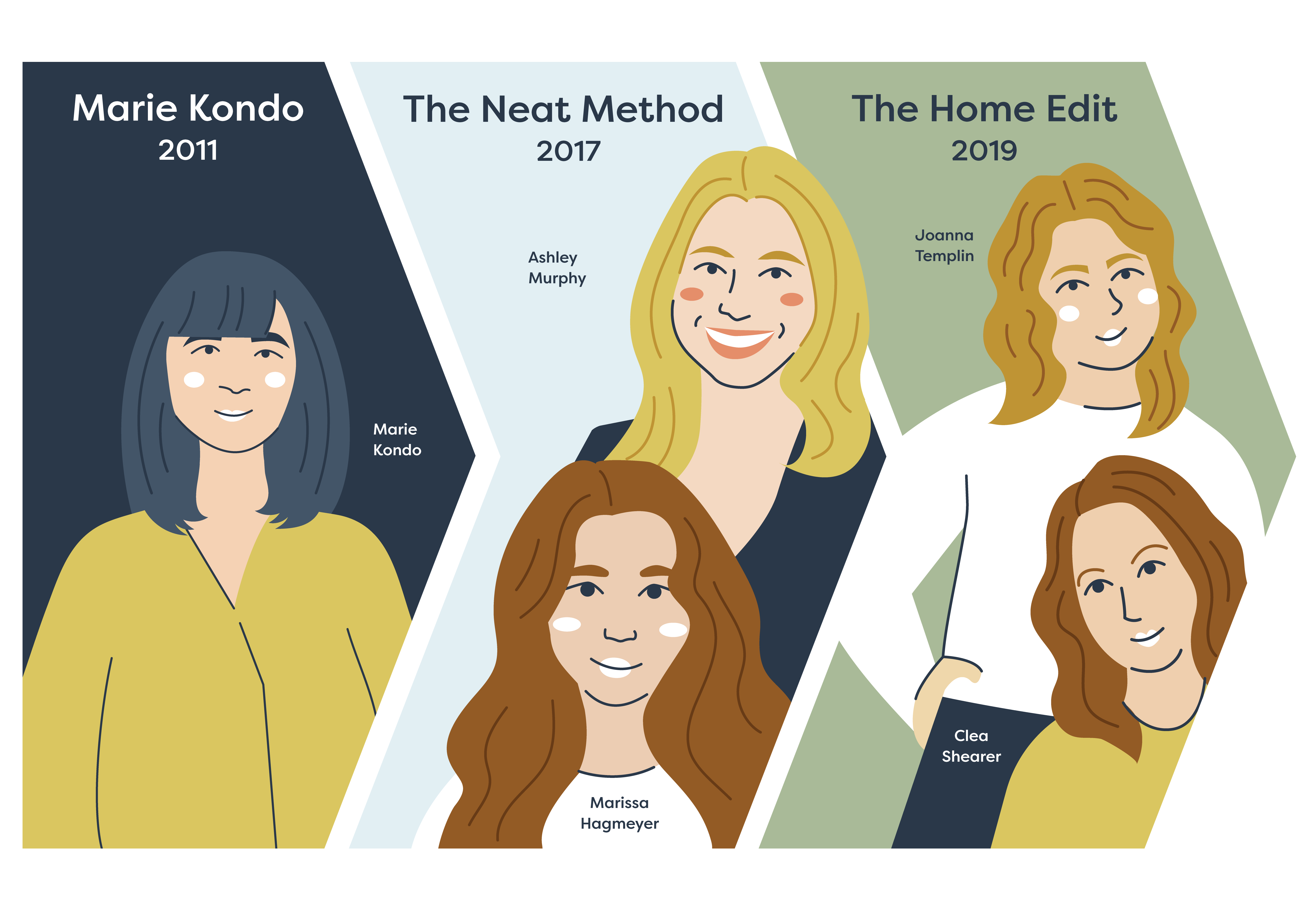Inside the business of home organizing: A brief history
This is the first in a three-part series about the business of home organizing.

Families want to buy back their time, and professional home organizing is just the service they need!
Research suggests 56 percent of Americans are open to paying for more household support. Early adopters know the benefit of a home where everything has been organized and put away is worth every penny. But what’s behind this story? Today we’re diving into the history of the professionals providing home organization services.
The professional home organizing industry is relatively new to the US marketplace. As it exists today, it primarily consists of thousands of individuals operating solo LLC businesses. To my knowledge, there isn’t yet industry data for home organizing. I conservatively estimate that there are at least 5,000 individual home organizers across the US and believe there’s an existing demand for over $250 million from households hiring professional organizers to help them take back control of their home spaces. Over the next three posts, we will break down how we determined these numbers and share our perspective on how women working together can revolutionize domestic labor, starting with the home organization industry. To understand the industry and how we got here, let’s begin with a brief history of home organizing.
How professional home organizing became a premium home service

It starts with Marie Kondo
As a quick refresher, a spotlight shone on the industry of professional home organization in 2011 when Marie Kondo launched her book The Life-Changing Magic of Tidying Up. In it, Kondo taught people to live minimally, with intention, and she created a movement that had many people asking if their belongings “sparked joy.” When considering home organizing as a premium and intentional design service, I mark this as the beginning of the industry as it exists today because it started a national conversation about how people manage all of the “stuff” in their homes.
The Neat Method adds design and uses containers.
Around this time, two women based in San Francisco started the Neat Method company. They introduced a design quality to home organizing beyond minimalism, including curation and design. Ashley Murphy and Molly Graves noted that they “knew they were on to something” when Vogue wrote about them in January 2012. According to them, they got a call in 2016 from Whitmor, a product manufacturer that specializes in home organization and were acquired in 2017, about the same time they launched as a franchise business.
The Home Edit brings stars and rainbows, for real!
Three years after the Neat Method started, another duo with a ton of star power launched from Nashville, Tennessee. In 2015, Clea Shearer and Joanna Teplin introduced The Home Edit. Its rainbow aesthetic was eye-catching and gained attention from many Hollywood stars, including Reese Witherspoon. Using their connections, they quickly moved to publishing books in 2019 and 2020 and launched a Netflix series, in partnership with Reese Witherspoon’s company Hello Sunshine, showcasing famous celebrity homes they organized and styled. In 2022, after Candle Media purchased Hello Sunshine, they also acquired The Home Edit and dubbed it a lifestyle brand.
Thousands of organizers find their start.
Meanwhile, from 2012 to date, thousands of organizers began popping up across the country. Dozens of successful individuals added additional revenue streams by publishing books or offering courses and summits to teach others how to start a home organizing business. A noncomprehensive list includes Shira Gill, Jen Robin, Susie Salinas, Stephanie Sikora, Brandie Larsen and Ryan Eisland, Heather Bifulco, Ria Safford, and sooo many more!
Early last year (and before Google changed their tracking programs), I used Google Trends to query the number of people looking for “home organizers near me” compared to “home organizing” as a topic. The graph below is far from perfect, but starting in 2015, the yellow and red lines show a growing interest in finding “organizers near me” as these services become known and popular.

As a back-of-the-envelope estimate, I believe there are hundreds of “design-focused” organizers operating in every state as individual organizers or small teams. In large cities like Los Angeles, Dallas, or Miami, we can name hundreds of organizers in each city! It seems reasonable to surmise that at least 5,000 people have embarked on the journey to become professional home organizer entrepreneurs. And while the beautiful websites, curated Instagram feeds, and “Pinterest-perfect pantries” make it look like glamorous work, the reality (for most) is shockingly different.

Entertainment TV makes building a successful home organizing business look easy. Behind the scenes at Reset Your Nest, we learned that even modest success takes a lot of hours, hustle, and hard work.
Launching a home organizing business is appealing to anyone who is a natural organizer and enjoys designing their home spaces. It’s a job you can do on your own time, as your own boss—and who doesn’t want to get paid to do something they love? The reality of this business is much messier and incredibly challenging.
As a budding industry, there isn’t a playbook for the business of home organizing, and most organizers are making it up as they grow. Standards have not (yet) emerged for business structure, worker classification, insurance policies, client management tools, or inventory management. In short, the business of organizing is anything but organized below the surface.
Like many other organizers, Jen Martin started Reset Your Nest as a one-woman business. As she experienced success, she and I recognized an opportunity to approach home organizing from a collective perspective rather than simply as an individual sport. It was only after we started to grow—and after we defined our mission and started working towards the collective success of the industry—that we fully appreciated the shape and history of the industry and the challenges that come when individuals try to go it alone.
At Reset Your Nest, we spent the last year learning and defining everything we could about the business of organizing. This includes the unit economics and product costs required to deliver the beautiful spaces we curate. In the fall of 2022, we attended the How To: Summit to meet other motivated and successful home organizers and learn how they were building their businesses to scale. We found that while part of the art of gaining clients is marketing a successful and profitable business, it is hard to become as profitable as brands appear on Instagram.
Turning to data
After this conference, we conducted a survey of 54 professional home organizers across the United States. This survey, while informal, represents some of the best data on home organizing that we’ve been able to obtain—and I can’t wait to share the high-level findings with you in the second part of this series.
